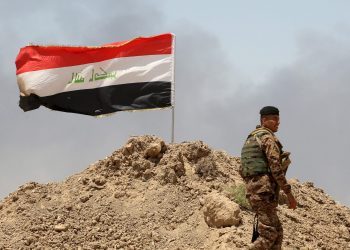,
WASHINGTON: The Intelligence Reform and Terrorism Prevention Act of 2004 did more than create the Office of the Director of National Intelligence (ODNI) — it charged the Office with significantly reforming and strengthening America's Intelligence Community.
Under the leadership of Director John D. Negroponte, the ODNI has revitalized, reformed, and led the Community to better protect our nation by:
Forging structural change, and dismantling the “stovepipe” mentality that
said agencies could produce, and limit within its walls, vital national
intelligence.
* The National Counterterrorism Center (NCTC) is drawing on collected
terrorist intelligence from agencies across the U.S. Government —
with access to more than 30 different networks — to produce
integrated analysis on terrorist plots against U.S. interests at home
and abroad. This is being done nowhere else in government — and it
was only an aspiration prior to 9/11.
* NCTC produces a daily threat matrix and situation reports that exist
as the Community standard for current intelligence awareness. In
addition, NCTC hosts three video teleconferences daily to discuss the
threat matrix and situation reports to ensure the intelligence
agencies and organizations see all urgent counterterrorism
information.
* The National Counterproliferation Center (NCPC), the mission manager
for counterproliferation, has developed integrated and creative
strategies against some of the nation's highest priority targets,
including “Gap Attacks” (focused strategies against longstanding
intelligence gaps), “over the horizon” studies to address potential
future counterproliferation threats, and a specialized project on
priority issues such as the Counterterrorism-Counterproliferation
Nexus.
* Created the MASINT Community Executive to provide this important
intelligence discipline with a voice at the table, an advocate in
budget and policy decisions, and the impetus for further advancement.
* Worked closely with the Department of Justice and the Federal
Bureau of Investigation to establish the FBI's National Security
Branch to integrate the FBI's counterterrorism, counterintelligence,
and intelligence programs.
* Facilitated the establishment of a National Clandestine Service at CIA
with the Director of CIA serving as the National HUMINT Manager.
Ensuring that we collect the right intelligence in the best ways to
most accurately and objectively guide national intelligence.
* Strengthened the connection between collection and analysis by
appointing Mission Managers for key hard target issue areas and
enduring intelligence challenges. The North Korea and Iran Mission
Managers have already begun promoting Community-wid integration and
providing policymakers with briefings drawing on Community-wide
expertise.
* Initiated an Integrated Collection Architecture process to develop an
objective architecture and implementation roadmap that looks at
various collection disciplines in an integrated fashion.
* Established the DNI Open Source Center to function as a truly
Intelligence Community-oriented center of open source expertise on 1
November 2005. The Director of CIA serves as the DNI's executive
agent for the Open Source Center, which builds upon the CIA's former
Foreign Broadcast Information Service.
Focusing and strengthening our analytic work, better ensuring that our
policymakers receive the highest-quality analysis to guide their
decisions.
* Streamlined production of National Intelligence Council (NIC)
products, increasing output and minimizing delays in production time,
and implemented more effective explanation of the reasoning behind
judgments and the portrayal of alternative views of analysts.
* Acquired new and important items for the President's Daily Brief (PDB)
reflecting the unique strengths of the full Intelligence Community and
enhanced strategic planning for the PDB, to better tap expertise
within the Community. This will allow for better use of expertise
within the Community, better support for the policymaking process, and
will provide advanced warning of issues of concern on the medium to
long-term horizon.
* Made operational an Analytic Resources Catalog (ARC), which collects
and makes available analyst information to IC managers. An Analyst
Yellow Pages (based on the ARC) has also been released. It makes
contact information and portfolio information available to fellow
analysts IC wide.
* Disseminated the first IC Analytic Standards, capturing the best
practices from across the Community, the lessons learned from the
past, and the goals of reform.
Providing a clear direction to guarantee timely and meaningful results.
* Promulgated the first unclassified National Intelligence Strategy
(NIS), linking the Community's goals to the National Security Strategy
and establishing specific objectives and metrics for accomplishment.
Also began implementation of a structured, strategic planning process
to ensure NIS objectives are met.
* Developed a comprehensive IC-wide human capital plan.
* Established “joint duty” as a requirement for promotion to senior
positions.
Directly answering the specific needs of our intelligence customers.
* The DNI created the Requirements Directorate to give the IC's diverse
customers a responsive mechanism with which to articulate their
intelligence needs, determine the extent to which the IC is addressing
those needs, and facilitating a process to make changes if it falls
short of those needs.
* Created the Foreign Relations Coordinating Committee to synchronize
Intelligence Community foreign outreach efforts and maximize
opportunities for the U.S. to achieve intelligence goals and national
policy objectives.
Leading the way with the latest technologies.
* For the first time ever, the Intelligence Community's Science and
Technology (S&T) leadership created a joint S&T plan that identified
major unmet needs for the IC as a whole as well as opportunities for
broader cooperation to satisfy those needs.
* As part of the overarching plan, S&T initiated several joint programs
that target the Community's most pressing problems and forge cross-
Community teams in the process. Some of these teams have already
delivered prototypes of innovative new technologies to combat
terrorism. S&T is also preparing an ambitious plan to accelerate the
deployment and cut the costs of major capabilities that will benefit
multiple agencies.
Moving the Intelligence Community forward to adopt a Community-wide
technology architecture.
* The Chief Information Officer implemented a classified information
sharing initiative that enhanced and expanded information sharing with
key U.S. allies. While the success of this program is only one step
toward overhauling the IC's information management system, it
represented a paradigm shift in the Community's information sharing
policies.
Working to share intelligence with affected parties outside the
Intelligence Community.
* Created a Program Manager for the Information Sharing Environment, who
recently released the Information Sharing Environment Implementation
Plan and Privacy Guidelines that provide the vision and road map for
better sharing information within the Intelligence Community and with
our fellow Federal, state, local, and tribal counterparts, as well as
with the private sector.









